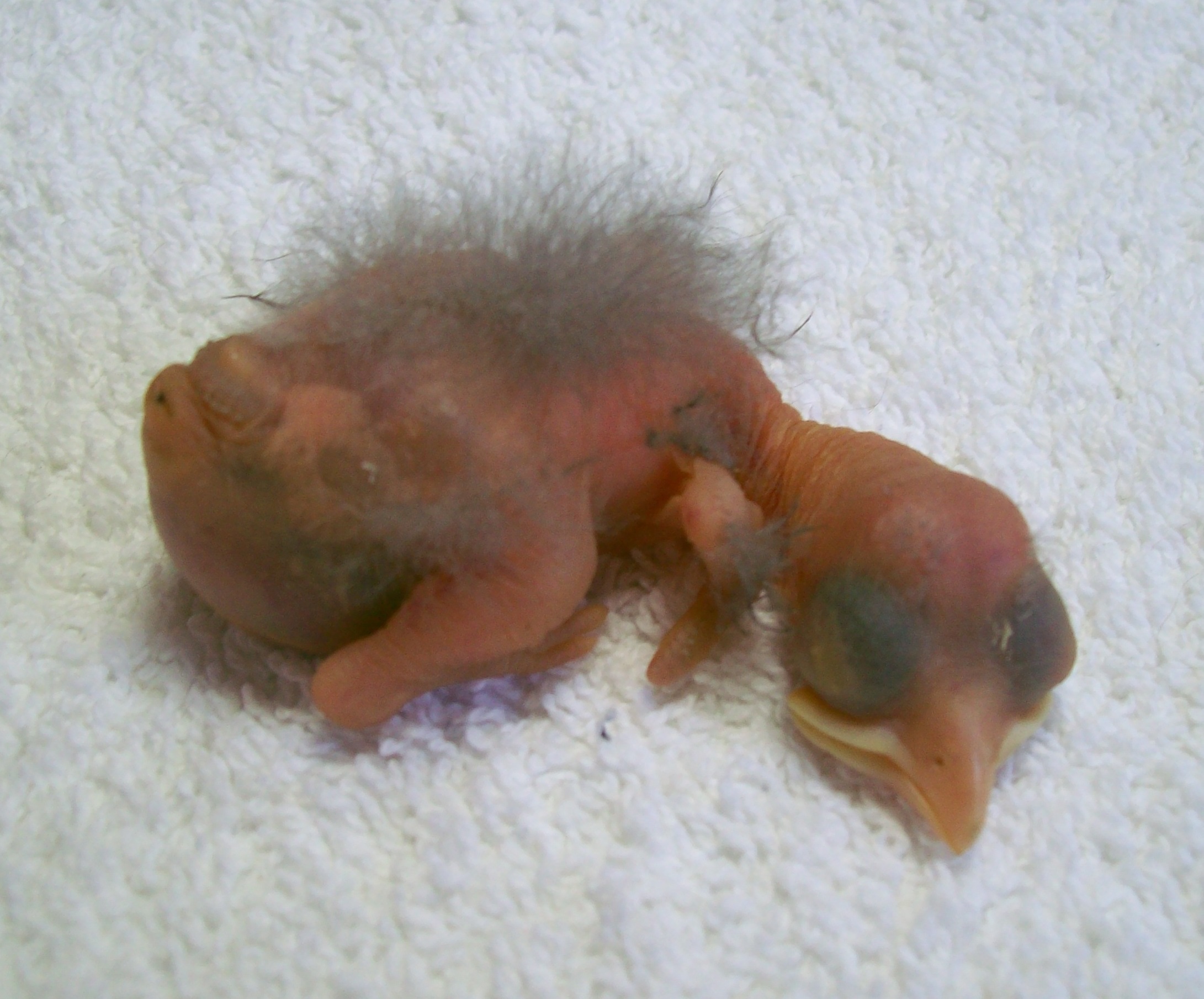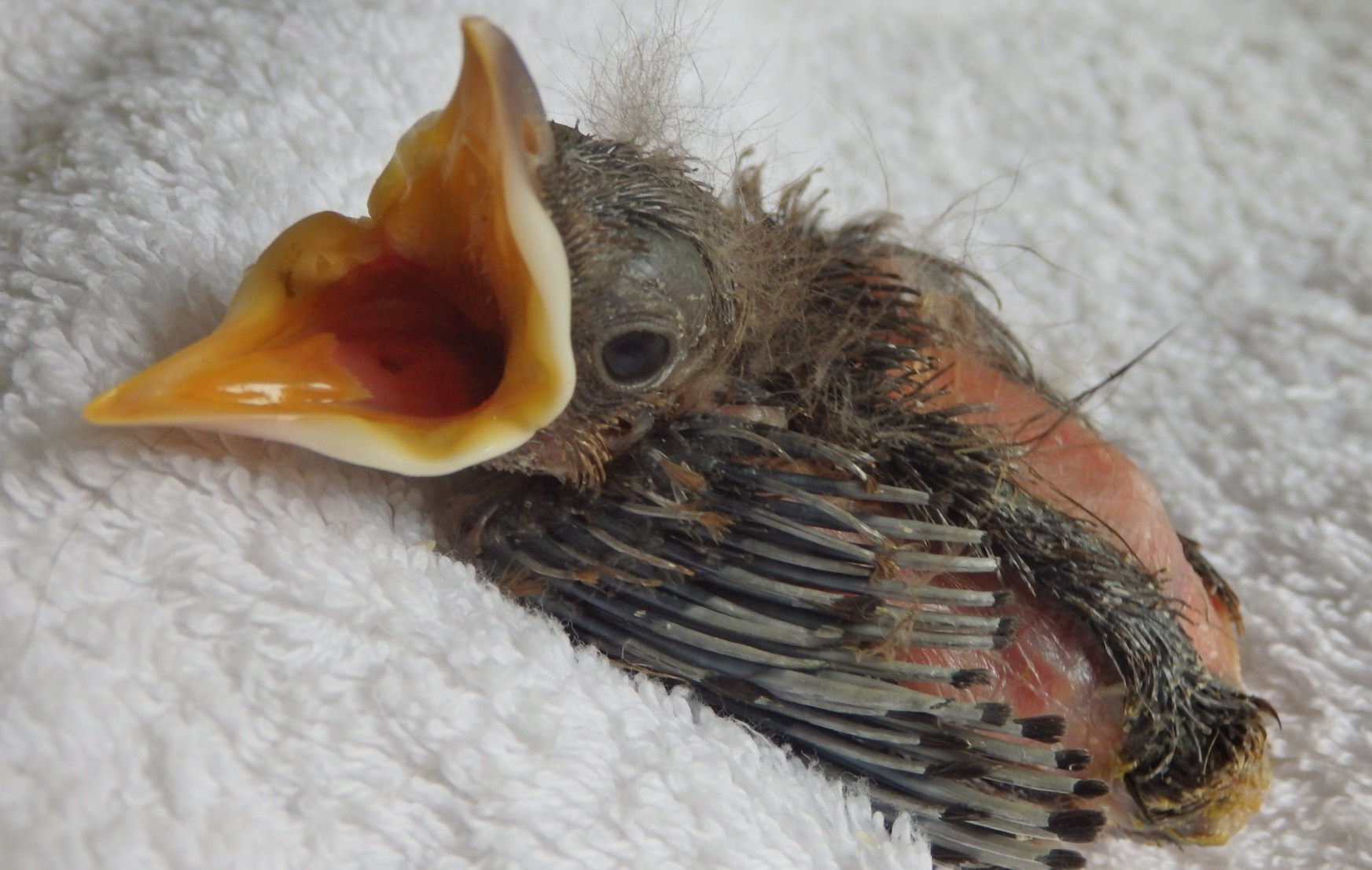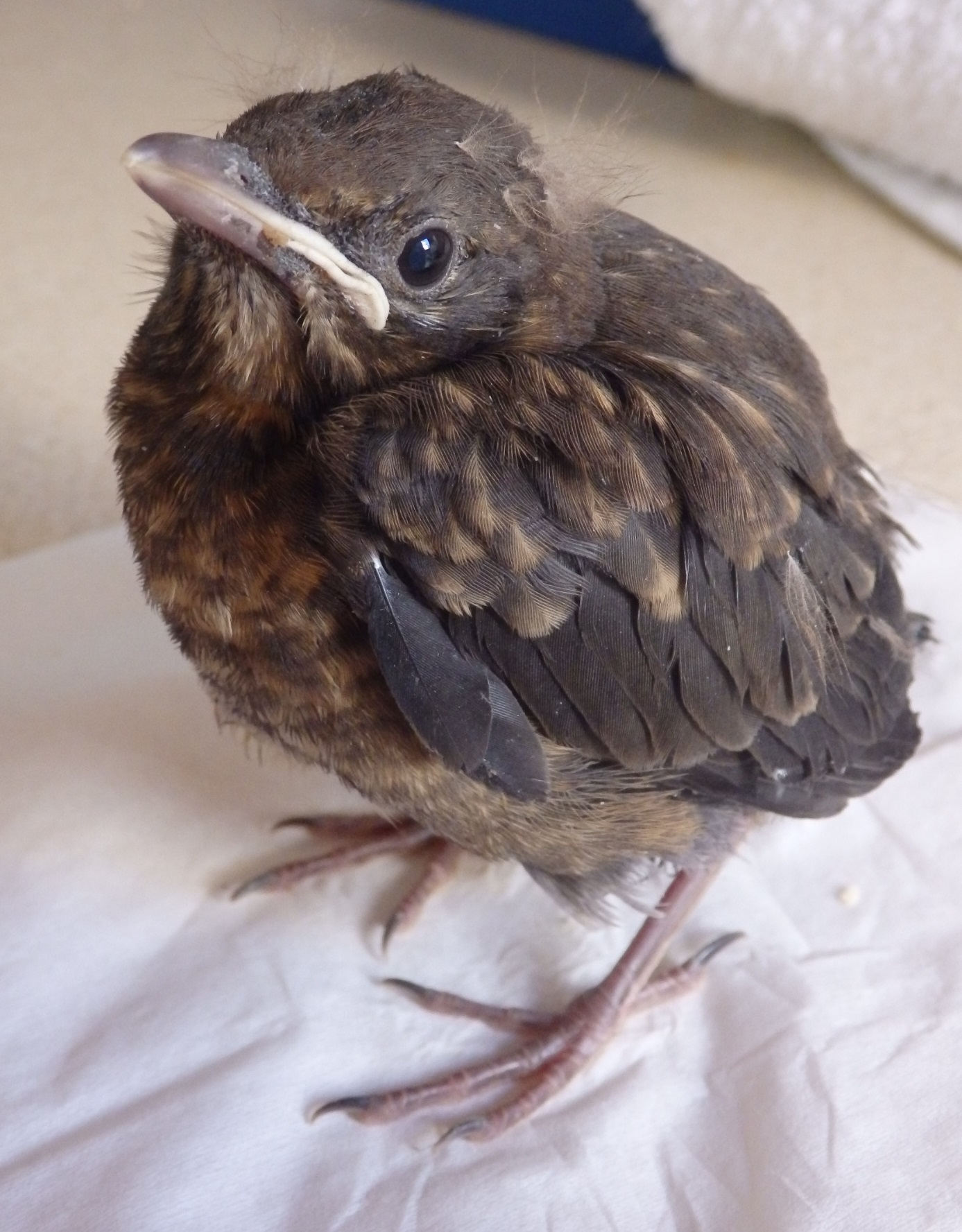General Information
Every Spring and Summer we get calls from worried members of the public who have found a baby bird and don't know what to do. So often they think the young bird is injured, as it's unable to fly, and consequently have picked it up in the belief it needs help. In many cases these young birds aren't orphans, or injured, and just need to be left alone.
It's important to note that there are two types of hatchling bird - one is known as an altricial bird and the other is a precocial bird. Altricial birds hatch out with their eyes closed, are relatively immobile, are usually naked, and are quite unable to care for themselves. Examples of these types of birds are: sparrows, swallows, owls, pigeons, and many other garden birds. Precocial birds hatch out with their eyes open, are fully mobile in a short space of time, are covered in a downy feathering, and are able to find their own food. However, although precocial chicks are very well developed when they first hatch out, they remain dependant on their parent's body heat for a short while and, need to be brooded to stay warm, as they are unable to regulate their own body temperature. Examples of these types of birds are: ducks, geese, chickens, game birds, and waders. There are three terms used to describe the developmental stages of an altricial bird. The information given below will hopefully help you to identify the age of the baby bird you've just found.
Hatchling
A baby bird with its eyes closed, usually naked, and relatively immobile. However, newly hatched owls, hawks, and pigeons will be covered in a fluffy downy feathering. At this very young age a hatchling is totally helpless and, without constant parental care, would very quickly die.

Nestling
A baby bird that will now have its eyes open and have a mixture of pin feathers (feathers that are still covered in a keratin sheath} and bare skin. A slightly older nestling will have a mixed covering of pin feathers, fully developed feathers, and fewer areas of bare skin. At this age a nestling, as the name implies, is still totally dependant on the security of its nest.

Fledgling
This is a baby bird that no longer requires the safety of its nest. It's now well feathered, although its tail will still be short and stumpy, it will be mobile but unable to fly. This is perfectly normal, as most young birds will deliberately fledge their nest before they can fly. These fledglings will spend several days on the ground gradually strengthening their flight muscles by fluttering up onto low branches. The only exceptions are swifts, swallows, and house martins. They are immediately able to fly when they leave their nest, and should never be found on the ground.
